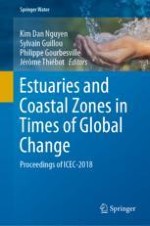2020 | OriginalPaper | Chapter
Response of Salinity Intrusion to the Fictitious Blockade of the North Branch in the Yangtze Estuary, China
Authors : Ding Lei, Dou Xiping, Gao Xiangyu, Jiao Jian, Hu Jing
Published in: Estuaries and Coastal Zones in Times of Global Change
Publisher: Springer Singapore
Activate our intelligent search to find suitable subject content or patents.
Select sections of text to find matching patents with Artificial Intelligence. powered by
Select sections of text to find additional relevant content using AI-assisted search. powered by
